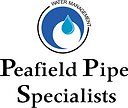In the world of industrial manufacturing and construction, safety is paramount. This principle holds particularly true when it comes to hydrostatic pressure testing, a crucial step in ensuring the structural integrity and reliability of various vessels and pipelines. While hydrostatic pressure testing plays a vital role in quality control, it is essential to understand the potential hazards associated with it and implement stringent safety precautions. In this article, we will delve into the world of hydrostatic pressure testing, examining the risks involved and the precautions necessary to keep workers and equipment safe.
Understanding Hydrostatic Pressure Testing
Hydrostatic pressure testing is a widely used technique to assess the strength, integrity, and leak-tightness of pipes, pipelines, and pressure vessels. It involves filling the equipment with a liquid, typically water, and pressurizing it to levels that simulate the working conditions it will face during its operational life. This process helps identify any weaknesses, defects, or leakage points that might jeopardize the equipment’s safety and performance.
The Importance of Safety Precautions
While hydrostatic pressure testing is a valuable quality control measure, it is not without its risks. The high pressures involved can pose significant dangers to both equipment and personnel if not executed with care and adherence to safety protocols. Here are some critical safety precautions to consider when conducting hydrostatic pressure testing:
1. Risk Assessment
Before commencing any hydrostatic pressure test, conduct a comprehensive risk assessment. Identify potential hazards and evaluate their likelihood and severity. This assessment will help in devising a tailored safety plan for the specific test conditions and equipment involved.
2. Personnel Training
Ensure that all personnel involved in the testing process are adequately trained and familiar with the equipment and procedures. Training should cover the safe operation of testing equipment, emergency procedures, and the proper use of personal protective equipment (PPE).
3. Equipment Inspection and Maintenance
Regularly inspect and maintain all testing equipment to ensure it is in optimal working condition. Faulty equipment can lead to accidents or inaccurate test results. Pay special attention to pressure gauges, valves, and fittings.
4. Appropriate PPE
Mandate the use of appropriate personal protective equipment for all personnel involved in the testing process. This includes safety glasses, hearing protection, gloves, and, if necessary, full-body suits to protect against potential chemical exposure or contact with hot or cold liquids.
5. Controlled Environment
Conduct hydrostatic pressure tests in a controlled environment that is free from distractions and potential sources of danger. Restrict access to authorized personnel only and clearly mark hazardous zones.
6. Pressure Relief Systems
Install pressure relief systems such as safety valves or rupture discs to prevent over-pressurization. These systems are crucial for releasing excess pressure in case of emergencies, ensuring that equipment does not fail catastrophically.
7. Supervision
Always have a trained supervisor or engineer overseeing the entire testing process. Their expertise is invaluable in detecting potential issues and responding to emergencies swiftly.
8. Test Incrementally
When increasing the pressure during a test, do so incrementally and monitor for any signs of stress or leakage. Avoid sudden pressure increases, as they can lead to unexpected failures.
9. Emergency Response Plan
Have a well-defined emergency response plan in place. This plan should include procedures for handling equipment failures, injuries, chemical spills, or any other unforeseen incidents. All personnel should be aware of and trained on these procedures.
10. Test Documentation
Keep detailed records of the entire testing process, including pressure levels, duration, and any observations made during the test. This documentation can be valuable for future reference and analysis.
Conclusion
Hydrostatic pressure testing is a critical step in ensuring the safety and reliability of various industrial equipment. However, it comes with inherent risks that cannot be ignored. By following stringent safety precautions, conducting thorough risk assessments, and having a well-trained team in place, the potential dangers associated with hydrostatic pressure testing can be mitigated. Remember, safety should always be the top priority, and the extra effort and diligence in this regard are investments that pay off in the long run, protecting both personnel and equipment from harm. In the world of hydrostatic pressure testing, success is not just about passing the test; it’s about doing so safely.
